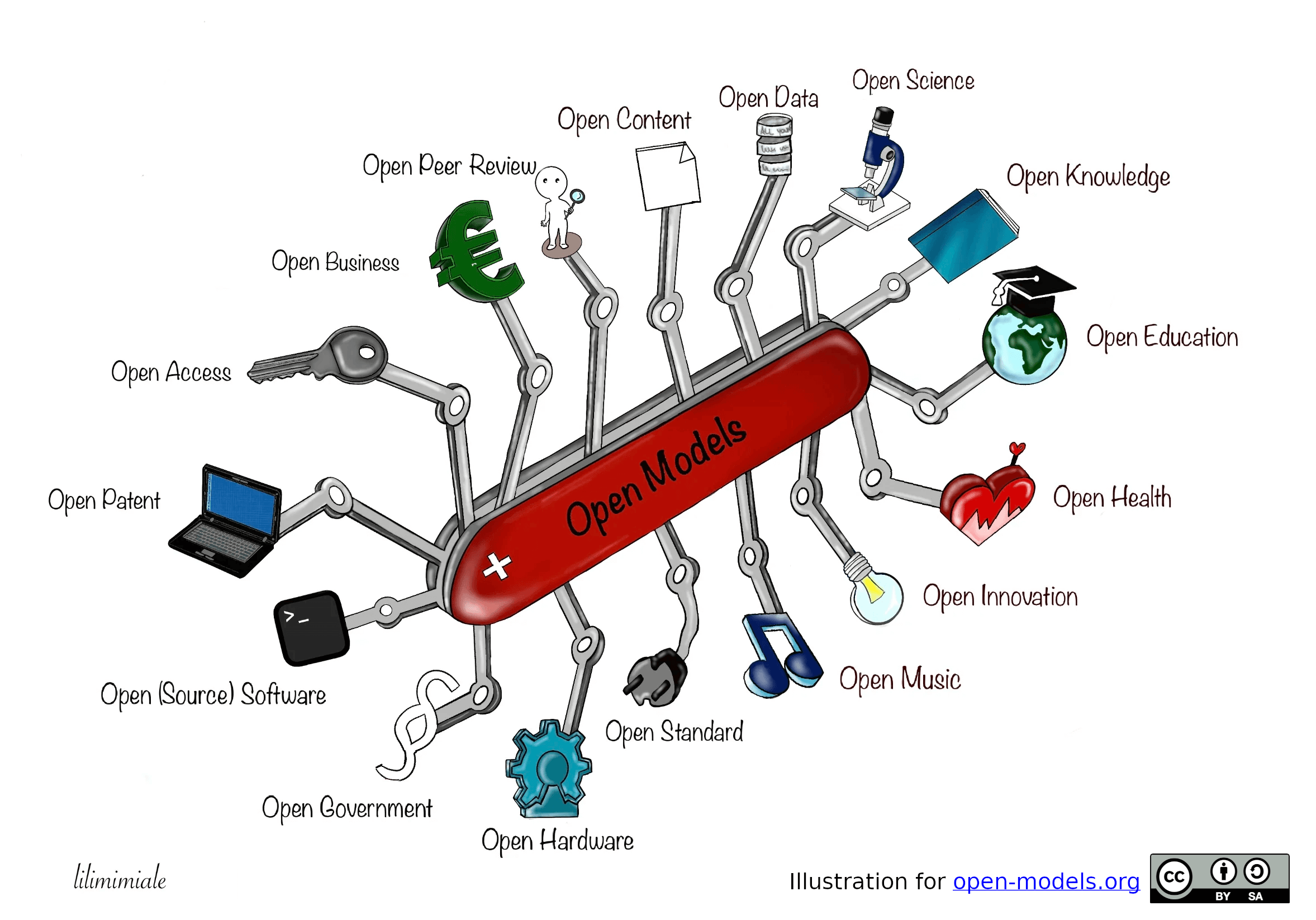Open Models
Open models: Modes of organisation and knowledge production based on the digital, the free circulation of information and collaboration on an Internet scale which seek to benefit from the properties of interaction between ecosystems.

The digital is transforming our relationship with knowledge through its ability to disseminate information and connect people. A variety of new dynamics based on sharing and collaboration around informational resources are emerging enabling the co-production of knowledge.
Based on shared interests, communities will federate to co-produce digital commons in a multitude of fields: software, scientific research, educational content, hardware, data, legal documents…
The digital commons are based on shared governance and can be freely used, studied, modified and redistributed. These resources will benefit from the singularities of collective intelligence combined with network effects.
The term “open models” allows us to think of these different phenomena as a whole that obeys common laws. Their study seeks to understand how socio-technical environments are built around digital commons, as well as the benefits and risks of interactions between a commons and its various ecosystems.
These models are complementary and mutually reinforcing.
Importance of open models
All open models are immature and their degree of maturity varies widely, but these phenomena are already both structuring and a driving force in our society and seem set to grow stronger with digital democratization. By their unique properties, these models provide the building blocks for the architecture of a system that is tending to improve thanks to their growing understanding and the ever-increasing number of players joining these movements.
Today, open source software is the most developed open model, it forms the foundations of our digital universe and one of the main driver of progress in computing for over 50 years. Every Internet user uses it at least indirectly, programming languages are open source, the World Wide Web is powered by open source with a cloud that depends on it, the 500 biggest supercomputers run on Linux, open source can be found on Earth, in the sky and in space… Use and contribute to a ubiquitous open source all the largest organisations in the technology sector (GAFAM + BATX), the largest universities, all the superpowers have a policy in this area.
Since the Age of Enlightenment and the first scientific revolution, science has remained imperfect and has gone through its crises. With the digital revolution coupled with ecological crises, a second scientific revolution is taking shape of which open science is becoming a central component. The whole way in which scientific knowledge is disseminated and produced is evolving, with the majority of so-called prestigious universities already participating or countries such as France seeking to normalize the practice. The aim is to ensure that “the Internet now offers the chance to constitute a global and interactive representation of human knowledge, including cultural heritage and the guarantee of worldwide access” [2003, Berlin Declaration on Open Access to Knowledge in the Sciences and Humanities].
These transformations are gradually extending to all other fields such as education and industry, which are themselves affected by this change in relationship to knowledge. Their implementation is sometimes more complex, both technically and culturally.
Open models are at the heart of the digital revolution, a paradigm shift that will impact tomorrow’s standards.